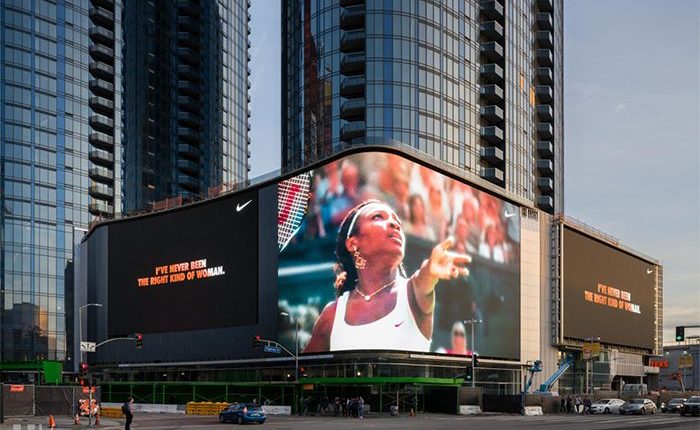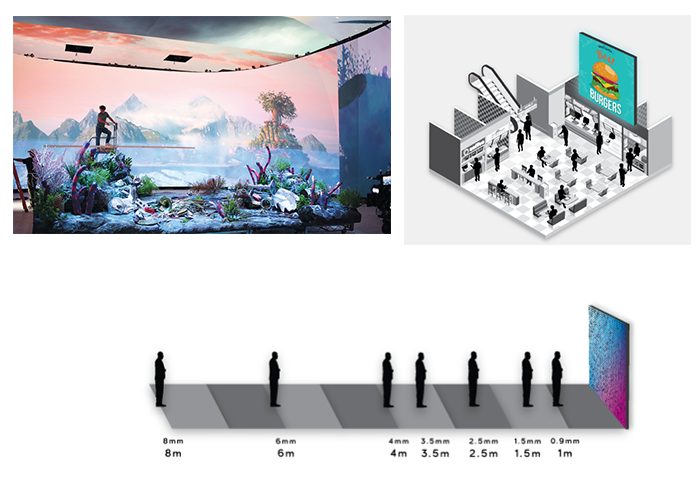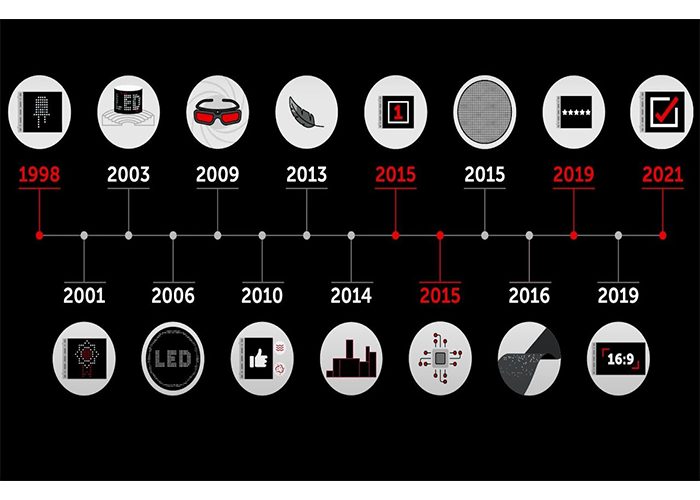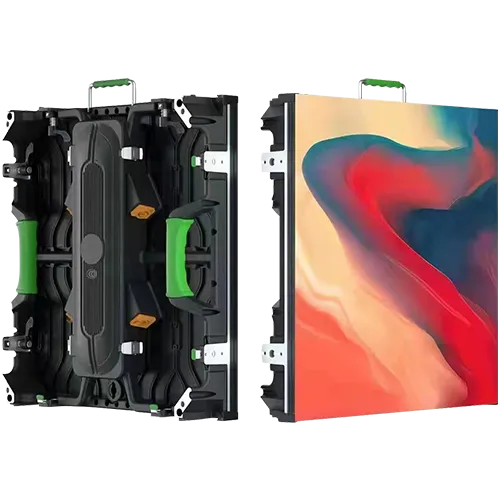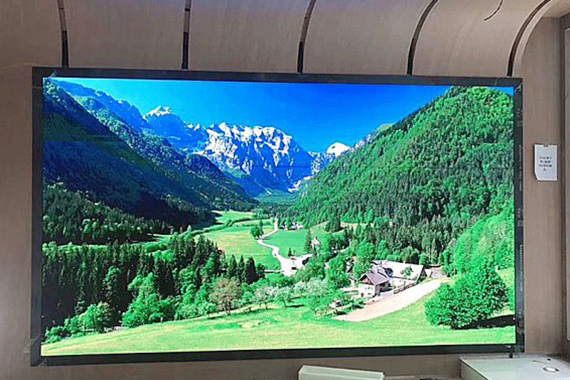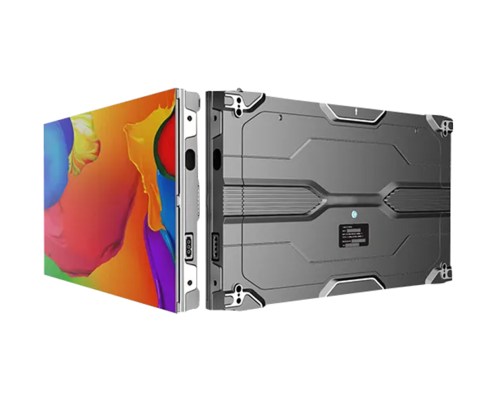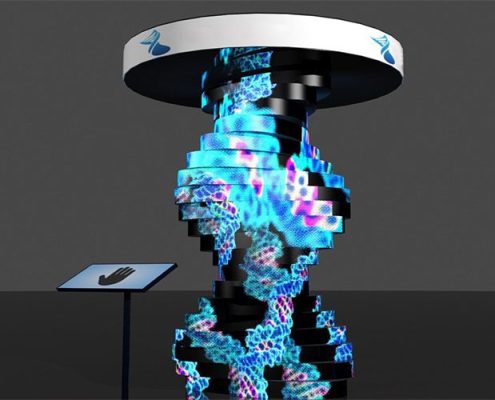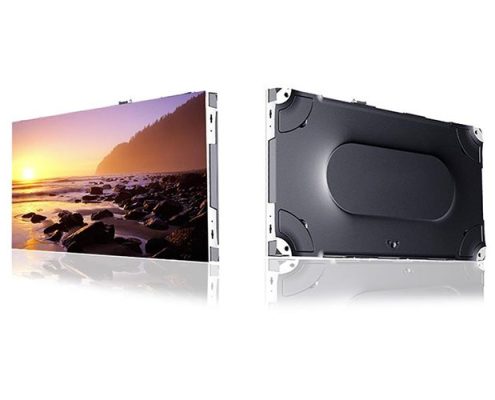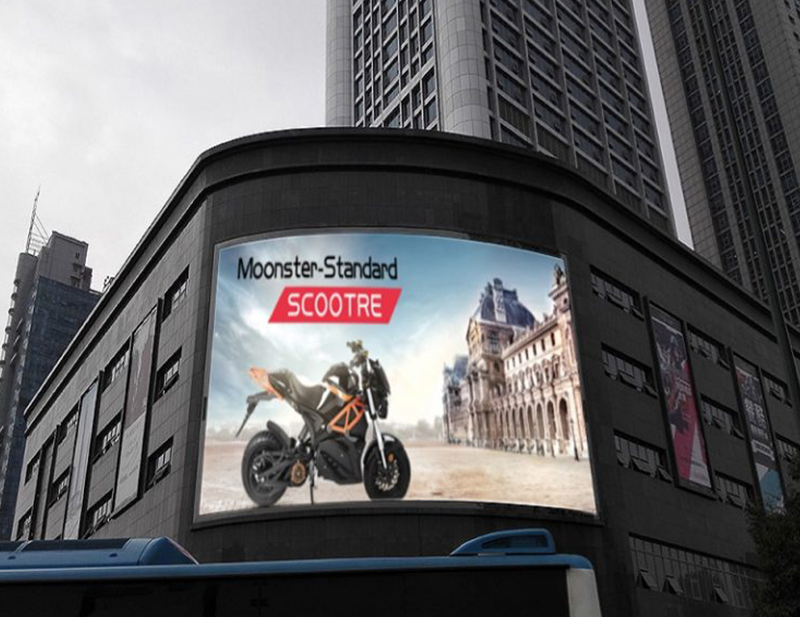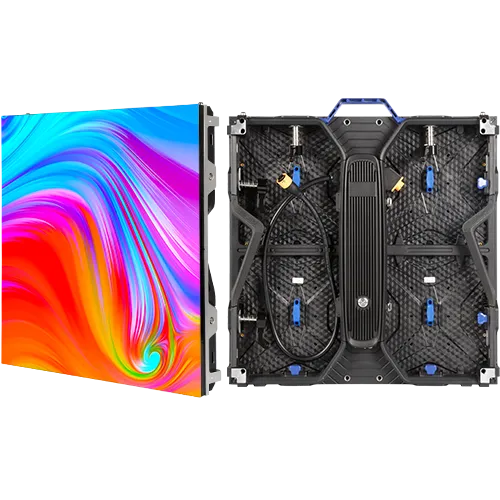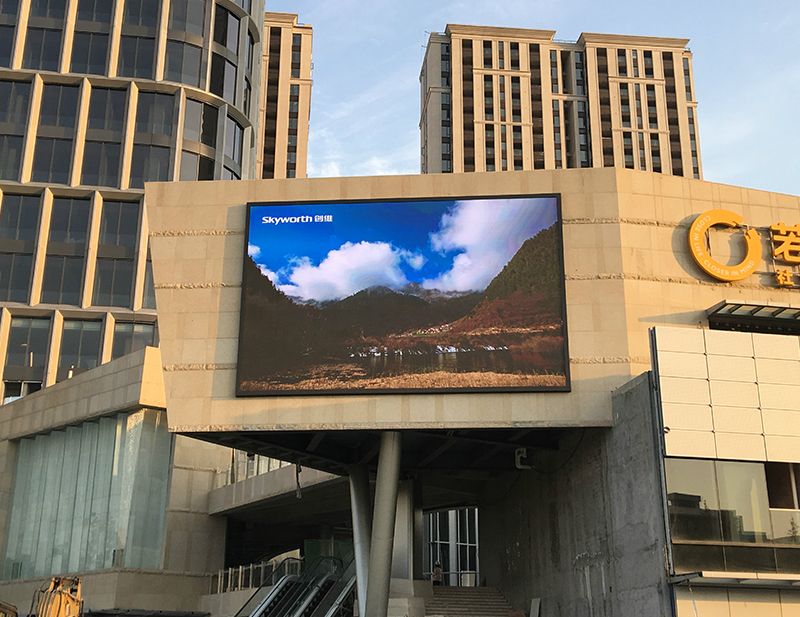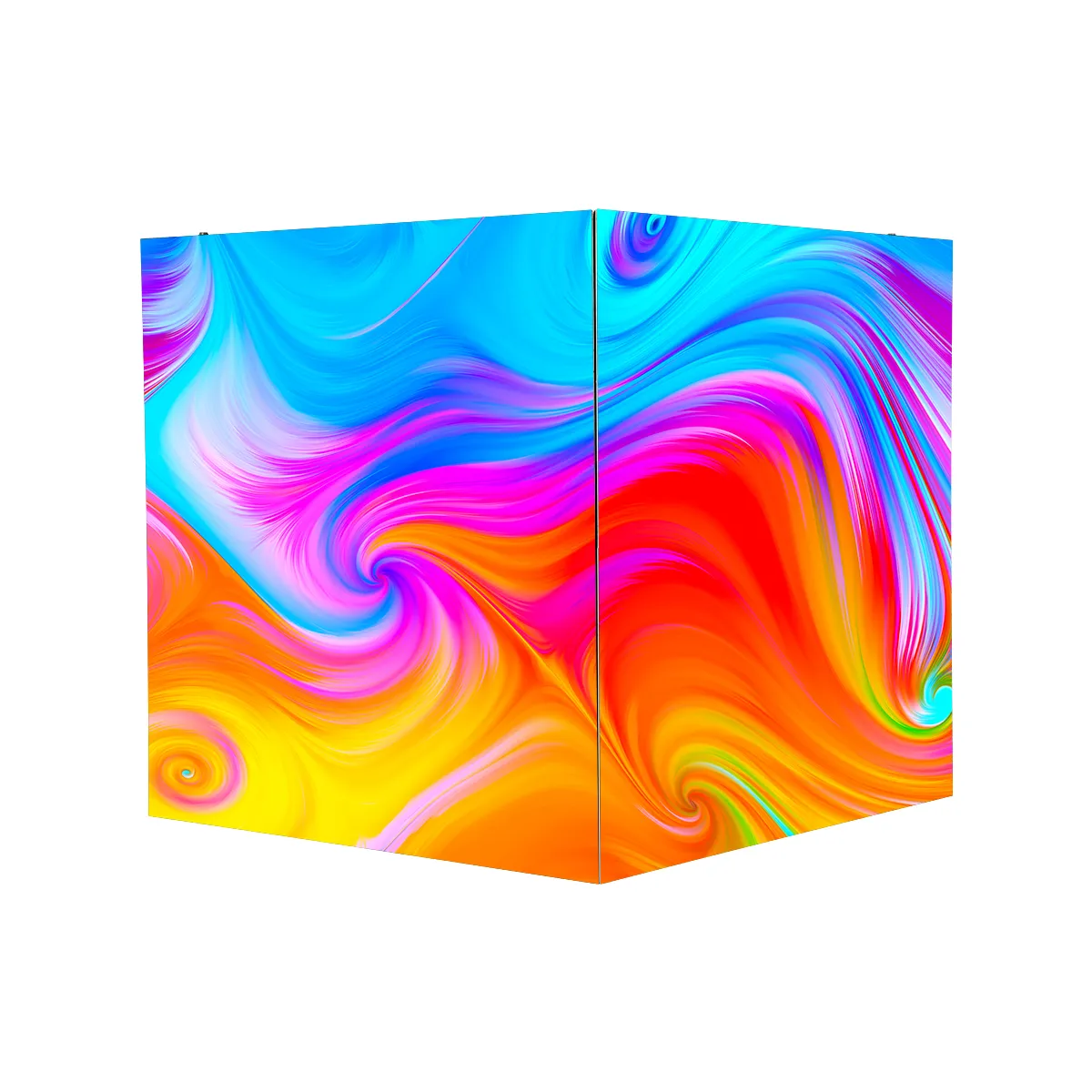Online Consultation or Need a Quote?
Big LED Screen of Shine LED Display
Shine’s LED stage screen display delivers an eye-catching wide viewing experience for any concert or venue needs. Maximize your stages visual impact and delight your audience with an unforgettable experience!
Shine LED Display has been the premier LED solutions partner for over 25 years.
From installation to integration we make this process super easy! Chat with one of our specialists about your upcoming project now!
OUTDOOR LED DISPLAYS | VIDEO WALLS
- Best visual impact: So huge that it will be impossible to ignore.
- Eye-catching and dynamic technology: Your brand will stand out.
- High quality image: Amazing brightness, fully visible during daylight.
|10 Year Warranty| |Free Shipping| |24/7 Tech Support|
Advantage of Shine Big LED Screens
Shine LED Display is a global leader for LED video wall solutions with thousands of marquee installations around the world. We deliver high performance, commercial grade, direct view LED displays with pixel pitches from 0.6mm to 20mm; for everything from the highest-resolution MicroLED video walls for cinema and on-camera applications, to the biggest sports venue video boards and touch-based displays for collaborative spaces.
HIGH BRIGHTNESS DISPLAYS
LED Displays give you the benefit of an uninterrupted image, with our LED systems fitting together seamlessly to create a high-quality display void of visual barriers that are commonly found in LCD Video Walls. The end product is a sleek, stylish canvas for visual content that also provides a stunning representation of your brand that’s guaranteed to turn heads and get you noticed.
LED Screens are commonly found in large indoor spaces, like shopping malls and sports facilities, where there are high levels of ambient light which have little effect on the display’s high brightness image. Indoor LED Displays offer the best platform for advertising and displaying content in high traffic areas, catching the attention of passers by due to their superior brightness and delivering a fantastic image that’s tailored to your audience.
RANGE OF PIXEL PITCHES
All of our Indoor LED Displays come in a modular format, which can be assembled in any screen size big or small. We offer a range of options based on the viewing distance necessary with modified solutions for up close displays and applications requiring long distance viewing.
The smaller the pixel pitch (distance between each pixel), the higher the resolution and closer the viewer can view the screen. Each of our Indoor LED Screens are shipped in module format allowing you the flexibility to create screens of any size. Options for front or rear service access are available depending on your installation.
MEMORABLE LED SIGNAGE
Pro Display’s indoor LED screens are manufactured to strict quality standards and come complete with free spare parts and a comprehensive warranty.
If you’re looking for more information on our LED range or an Indoor LED Display Price, we offer multiple solutions suited to different budget requirements, often depending on the viewing distance and size. Pro Display offers LED screens that serve as a solution to a variety of applications, with a comprehensive range of both indoor and outdoor displays available.
The History of LED Screens
The big LED screen represents a pivotal intersection of technology and visual culture. Emerging from advancements in the 1960s, these screens have transformed from simple light displays into expansive, vibrant canvases that command the attention of global audiences. Initially gaining fame in places like Times Square, they’ve become essential in urban environments, offering a dynamic platform for advertising, art, and public messaging. Innovations over the years have made LED screens not just more visually stunning but also energy-efficient and adaptable to various architectural forms. Today, they’re not just tools for information and entertainment but also mediums for artistic expression and community engagement. As technology progresses, the future of LED screens looks toward even greater integration with urban life and smarter, more interactive displays. This evolution underscores the role of big LED screens in shaping our collective visual experience, marking them as symbols of modernity and innovation.
The Evolution of Big LED Screens
The evolution of big LED screens is a journey marked by significant technological advancements and expanding applications in public and private spaces. Below, we explore the key milestones in the development of LED technology and how these have influenced the design, functionality, and use of big LED screens over the years.
| Era | Key Developments | COURSE OF EVENTS |
|---|---|---|
| 1960s – Early Beginnings | 1960s – Early Beginnings | 1960s – Early Beginnings |
| 1970s – Expansion | Introduction of green, and later blue LEDs. | Expanded the potential for LED applications beyond indicators to displays, though still primitive by modern standards. |
| 1980s – Commercialization | Development of brighter LEDs and the first large LED displays. | Enabled the production of larger displays for advertising and public information, though with limited resolution and color depth. |
| 1990s – Color Breakthrough | Invention of the blue LED and the subsequent development of white LEDs. | Revolutionized LED displays by enabling full-color screens, paving the way for video content and dynamic advertising. |
| 2000s – High Definition | Advances in LED technology lead to higher pixel densities. | Allowed for the creation of high-definition LED screens, making them suitable for close-up viewing in various applications, including television. |
| 2010s – Innovation and Flexibility | Introduction of flexible and transparent LED screens. | Opened new avenues for creative installations, including curved and wrap-around displays, enhancing architectural and design possibilities. |
| 2020s and Beyond – Smart Integration | Integration with IoT and smart city technologies. | LED screens become interactive, capable of responding to real-time data and engaging with audiences in innovative ways, marking a new era of digital communication and advertising. |
The evolution of big LED screens from simple light indicators to sophisticated, interactive displays is a testament to the rapid advancements in LED technology. As we look to the future, these screens will undoubtedly continue to play a significant role in shaping our visual and digital landscapes.
What Is Big LED Screens?
Big LED screens are large-scale displays that utilize Light Emitting Diode (LED) technology to produce vibrant images, videos, and texts in high resolution. These screens consist of thousands, sometimes millions, of tiny LEDs that emit light when activated. Each LED functions as a pixel, contributing to the overall picture displayed on the screen. The technology behind these screens allows for bright, dynamic visuals that are clearly visible even in direct sunlight, making them ideal for both indoor and outdoor applications.
The appeal of big LED screens lies in their versatility and effectiveness in capturing attention through vivid imagery and motion. They are commonly found in public squares, stadiums, concert venues, and commercial establishments, serving various purposes from advertising and information dissemination to entertainment and art displays. The modular nature of LED screens means they can be customized to fit specific sizes and shapes, enabling creative installations that can wrap around buildings or conform to unusual architectural elements.
In addition to their impressive visual capabilities, big LED screens offer several advantages over traditional display technologies, including higher brightness levels, wider viewing angles, and longer operational lifespans. They are also becoming increasingly energy-efficient, reflecting advancements in LED technology and a growing emphasis on sustainability.
As technology continues to evolve, big LED screens are set to play a significant role in the future of digital signage, urban planning, and multimedia art, offering new ways to engage audiences and transform public spaces.
Types of Big LED Screens
Big LED screens come in various types, each designed to serve different applications and environments. The diversity in LED screen technology caters to a wide range of needs, from advertising and entertainment to architectural enhancements and information dissemination. Below is a detailed exploration of the main types of big LED screens and their unique characteristics.
1. Outdoor LED Screens
- Purpose: Designed for external use, these screens are built to withstand various weather conditions, including rain, wind, and extreme temperatures.
- Features: Outdoor LED screens are characterized by high brightness levels to ensure visibility even in direct sunlight. They often have robust casings to protect against weather and vandalism.
- Applications: Commonly used in public squares, sports stadiums, and as roadside billboards.
2. Indoor LED Screens
- Purpose: These screens are tailored for indoor environments, where factors like brightness and viewing distance differ significantly from outdoor settings.
- Features: Indoor LED screens typically have higher resolution than outdoor counterparts because viewers are closer to the screen. They are lighter and more refined, with less emphasis on weatherproofing.
- Applications: Used in shopping malls, airports, museums, and for indoor events like conferences and concerts.
3. Flexible LED Screens
- Purpose: Flexible LED screens offer creative solutions for unique installation requirements, allowing for curves and bends not possible with traditional LED screens.
- Features: These screens are made with a flexible material that can wrap around surfaces, conform to irregular shapes, and even create immersive environments.
- Applications: Ideal for custom architectural projects, stage performances, and innovative retail displays.
4. Transparent LED Screens
- Purpose: Transparent LED screens blend visual display capabilities with transparency, maintaining a view through the screen when needed.
- Features: These screens are built with a mesh-like structure or clear pixels, achieving a balance between image visibility and transparency. They offer a futuristic look and feel.
- Applications: Used on building façades, shop windows, and in any location where maintaining visibility through the screen is desirable.
5. High-Resolution LED Screens
- Purpose: High-resolution LED screens are designed to deliver exceptionally clear and detailed images, suitable for applications requiring fine image details.
- Features: These screens have very small pixel pitches (the distance between the centers of two adjacent pixels), allowing for detailed visuals even at close viewing distances.
- Applications: Perfect for indoor venues like theaters, control rooms, and anywhere detailed visuals are essential.
6. Mobile LED Screens
- Purpose: Mobile LED screens provide flexibility and mobility, allowing for the relocation of the screen as needed.
- Features: Mounted on trailers or trucks, these screens can be easily transported and set up in various locations. They are self-contained, often coming with their own power supply.
- Applications: Ideal for temporary events, roadshows, and anywhere a permanent screen installation is not feasible.
Key Features of Big LED Screens
Big LED screens have revolutionized the way we display visual content in public spaces, entertainment venues, commercial settings, and more. These advanced digital canvases come with a set of key features that differentiate them from traditional display technologies and make them highly sought after for a wide range of applications. Below are some of the key features of big LED screens:
1. High Brightness and Visibility
- Description: Big LED screens are known for their exceptional brightness, which makes them easily visible even in direct sunlight. This is crucial for outdoor applications where ambient light conditions can vary dramatically throughout the day.
- Benefit: Ensures clear visibility of displayed content in all lighting conditions, enhancing viewer engagement.
2. Wide Viewing Angles
- Description: LED screens typically offer wide viewing angles, meaning the displayed content remains visible and consistent in color and brightness even when viewed from sharp angles.
- Benefit: Allows large audiences to view the content from different positions without experiencing color shift or brightness loss.
- Examples from Shine LED Display ’s LED Stage Screen Displays: Shine LED Display ‘s LED stage screen displays are known for their wide viewing angles and ultra-bright diodes. These features ensure that performances and events are visually stunning for every member of the audience, regardless of their position in the venue.
3. Energy Efficiency
- Description: LEDs are more energy-efficient compared to traditional lighting and display technologies. They consume less power while providing superior brightness and visibility.
- Benefit: Reduces operational costs and supports environmentally friendly practices.
4. Durability and Reliability
- Description: Designed to withstand various environmental conditions, big LED screens are built with durability in mind. They are resistant to dust, moisture, and impact to varying degrees, depending on whether they are intended for indoor or outdoor use.
- Benefit: Ensures longevity and consistent performance, minimizing maintenance and replacement costs.
5. High Refresh Rates
- Description: Big LED screens often feature high refresh rates, which is the speed at which the image is refreshed. High refresh rates reduce flicker, especially important for cameras capturing the screen.
- Benefit: Provides smoother visuals for live broadcasts and reduces eye strain for viewers.
6. Modular Design
- Description: LED screens are inherently modular, meaning they are assembled from smaller panels or modules. This design allows for screens of virtually any size and shape.
- Benefit: Offers flexibility in design and installation, making it possible to create custom screen sizes and shapes for unique applications.
7. Vibrant Colors and Deep Blacks
- Description: LED technology can produce a wide color gamut and deep blacks, thanks to the ability to control the brightness of individual LEDs.
- Benefit: Results in vibrant, high-contrast images that are more engaging and realistic.
8. Seamless Integration
- Description: The slim profile and lightweight design of LED panels allow for seamless integration into various architectural and commercial environments without being obtrusive.
- Benefit: Enhances aesthetic appeal and allows for creative installations in a variety of settings.
Comparing Big LED Screen with Other Technologies
Big LED vs. OLED
| Feature | Big LED Screen Advantages | OLED Advantages |
| Brightness and Visibility | Generally offer higher brightness levels, suitable for well-lit environments and outdoors. | Provide excellent picture quality with perfect blacks and high contrast ratios, but may diminish in bright light. |
| Lifespan and Durability | Known for long lifespan and robustness in various conditions. | Offer superior picture quality but can suffer from burn-in issues over time. |
| Size and Flexibility | Can be built to almost any size and shape due to modular nature, offering great versatility. | Available in large sizes but more limited in customization compared to big screen LEDs. |
| Cost and Maintenance | May have a higher initial cost but tend to have lower long-term maintenance costs. | Can be more expensive to repair and replace due to organic materials and potential for burn-in. |
Big LED vs. QLED
| Feature | Big LED Screen Advantages | QLED Advantages |
| Color and Brightness | Provide excellent brightness and color accuracy, visible even in direct sunlight. | Known for vibrant colors and high brightness levels due to the Quantum Dot layer. |
| Viewing Angles | Typically offer wider viewing angles, ensuring consistent image quality across different positions. | Can suffer from limited viewing angles as a type of LCD, affecting picture quality at certain angles. |
| Screen Burn-in | Do not suffer from burn-in, suitable for displaying static images for extended periods. | Also resistant to burn-in, making them suitable for long-term static image display. |
| Cost and Size Flexibility | Can be more expensive initially but offer extensive customization with modular capabilities for unique installations. | Generally less expensive, especially at smaller sizes, but lack the modular capabilities of big screen LEDs. |
Big LED Screens in Action
The versatility and superior visual quality of Big LED Screens have made them a popular choice across various sectors. From enhancing home entertainment to transforming public spaces and business settings, the impact of big screen LED displays is widespread and significant.
Big LED Screens for Home
Transforming living spaces into immersive entertainment hubs, Big LED Screens offer a cinematic experience right at home.
Home Theaters: With their large size and high-quality image, big screen LED displays are perfect for creating a home theater. They provide a cinematic experience with their crisp images and vibrant colors.
Gaming: Gamers can enjoy a more immersive experience with the detailed and responsive visuals provided by a big screen LED display.
Big LED Screens for Stages and Events
Big LED Screens have become a staple in the entertainment industry, enhancing live performances and events with their dynamic capabilities.
Concerts and Festivals: Artists use big screen LED displays as backdrops to add a visual element to their performances, making concerts more engaging and visually stimulating.
Corporate Events: From product launches to conferences, LED big screens offer a dynamic way to present information and engage audiences.
Outdoor and Business Applications
Outdoor Advertising: Big screen LED displays capture attention in busy urban environments, making them ideal for outdoor advertising. They can show vibrant ads and information, visible even in direct sunlight.
Digital Signage: From displaying public information to advertising, digital signage uses big screen LED displays for their visibility and flexibility.
Sports Arenas: Large LED screens display live action, replays, and scores in sports arenas, enhancing the spectator experience.
Educational and Public Spaces
Big LED Screens serve as effective tools for education and information dissemination in public spaces.
Educational Institutions: Schools and universities use big screen LED displays as dynamic tools for learning, displaying educational content in a more engaging way.
Public Information: In public spaces like airports and train stations, big screen LED displays provide real-time information, making them essential for mass communication.
Retail and Hospitality
In the retail and hospitality sectors, Big LED Screens are used to enhance customer experience and engagement.
Retail Stores: Big screen LED displays are used in retail environments to showcase products, promotions, and create an immersive shopping experience.
Hotels and Restaurants: In the hospitality industry, LED big screens are used to create ambience, display menus, and provide guests with information.
The Future and Cost of Big LED Screens
As we look ahead, the trajectory of Big LED Screen technology is set to continue its upward trend, with innovations that promise to further enhance their capabilities and applications. At the same time, understanding the cost dynamics is crucial for those considering investing in these powerful display solutions.
The Future of Big LED Screens
The future of Big LED Screen technology is bright, with continuous advancements expected to push the boundaries of what’s possible in visual display.
Predictions and Upcoming Trends: As technology advances, we can anticipate even higher resolutions, more energy-efficient designs, and thinner profiles for Big LED Screens. The integration of AI and IoT could lead to smarter, more interactive displays that respond to user behavior and environmental changes.
Potential Future Developments and Innovations: One exciting area of development is the potential for more flexible and transparent Big LED Screens, which could open up new applications in architecture and design. Additionally, advancements in materials and manufacturing processes might lead to significant reductions in cost and further improvements in durability and image quality.
Cost Considerations
While Big LED Screens offer unmatched visual impact, their cost can be a consideration for many. Understanding what influences the price and how to find value is key.
Factors Influencing Price: Several factors contribute to the cost of a Big LED Screen. The resolution, size, and pixel pitch are primary determinants—higher resolution and larger size generally mean a higher price. Additionally, the complexity of the installation, the quality of the components, and the features of the screen (such as outdoor capability or flexibility) can also affect the cost.
Finding Cost-Effective Solutions: To find a cost-effective Big LED Screen solution without compromising quality, consider the following tips: Assess Your Needs: Understand the specific requirements of your project. Sometimes, a lower resolution might be sufficient for large-scale outdoor displays viewed from a distance. Compare Options: Look at different manufacturers and models to find the best value for your budget. Consider not just the upfront cost but also long-term maintenance and energy consumption. Consider Modular Designs: Modular Big LED Screens can offer more flexibility and might be more cost-effective to repair or upgrade in the future. Seek Professional Advice: Consult with Shine LED Display’s experts.We can provide insights into the total cost of ownership and help you find a solution that meets your needs and budget.
FAQs About Big LED Screen
What is the biggest LED screen in the world?
The biggest LED screen in the world is the ‘Dubai Waterfall’ located at The Dubai Mall in Dubai, UAE. It’s a massive 820-foot tall LED screen that covers the mall’s famous indoor waterfall. However, records like this are frequently challenged, so it’s always good to check for the most current information.
What is an LED screen called?
An LED screen is commonly referred to as an LED display. In more technical terms, it might be called a Light Emitting Diode (LED) display. These screens can also be categorized based on their configuration or use, such as digital signage, LED video walls, or LED panels.
What is the world’s largest LED screen in Las Vegas?
The world’s largest LED screen in Las Vegas is the Viva Vision canopy over the Fremont Street Experience. It’s a massive overhead display that spans approximately 1,500 feet in length and 90 feet in width, offering a stunning visual experience to visitors with its high-resolution imagery and concerts.
How much do LED walls cost?
The cost of LED walls can vary widely based on several factors, including size, resolution (pixel pitch), indoor or outdoor use, brand, and additional features. Prices can range from a few thousand dollars for smaller, simpler setups to hundreds of thousands or even millions for large, high-resolution installations. For accurate pricing, it’s best to get a quote from a reputable supplier based on the specific requirements of your project.
CONTACT US
Consult with Our Free Advisor for Your Next Project!

